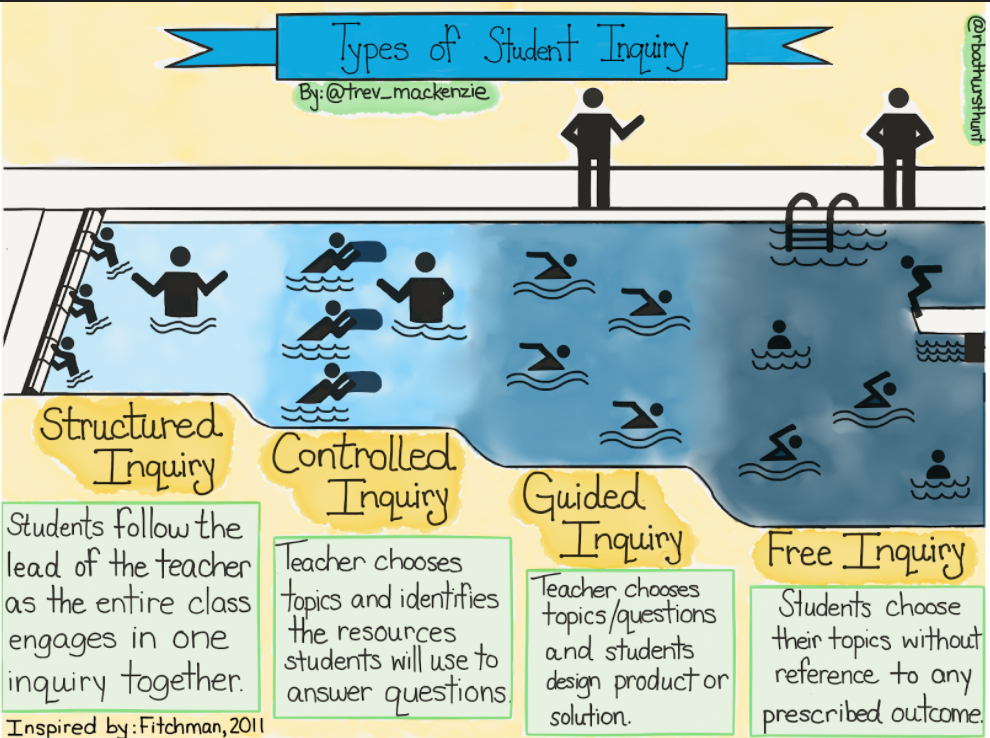This week we had the opportunity to talk with Rebecca Bathurst-Hunt! She talked about her experiences teaching kindergarten and how she integrates inquiry into her classroom. By asking guiding questions on various topics or using tangible provocations Rebecca is able to guide her Kindergarten class thorugh the inquiry process––even at such a young age!
Prior to this presentation when I thought of inquiry i thought of what I am doing in my classes right now––long term, free inquiry projects. However, inquiry is so much more complex and has so many more layers. I really like one of the pictures that Rebecca included in her slides illustrating all the different levels of inquiry. I have attached it below.

Starting the inquiry proccess in younger grades is so important. By building critical thinking and analysis skills, you are preparing your students to become better learners. By learning how to ask questions and learning that it is good to be curious about things, you are setting your students up for success in the future––you are empowering your students to research and follow through on their passions which is a skill that should be fostered in all environments. In younger grades, Inquiry can look like a class discussion on a specific topic or a longer project where they research an animal. Anything that involves asking questions and curiousity can be turned into inquiry.
At first, I was a little bit hesitant on the logistics of using inquiry in primary grades, however, after listening to Rebecca and her techniques and tips I realized that if you set the premises up correctly, you can get such amazing results! Watching your students explore, learn, and grow is so rewarding as well.

Leave a Reply
You must be logged in to post a comment.